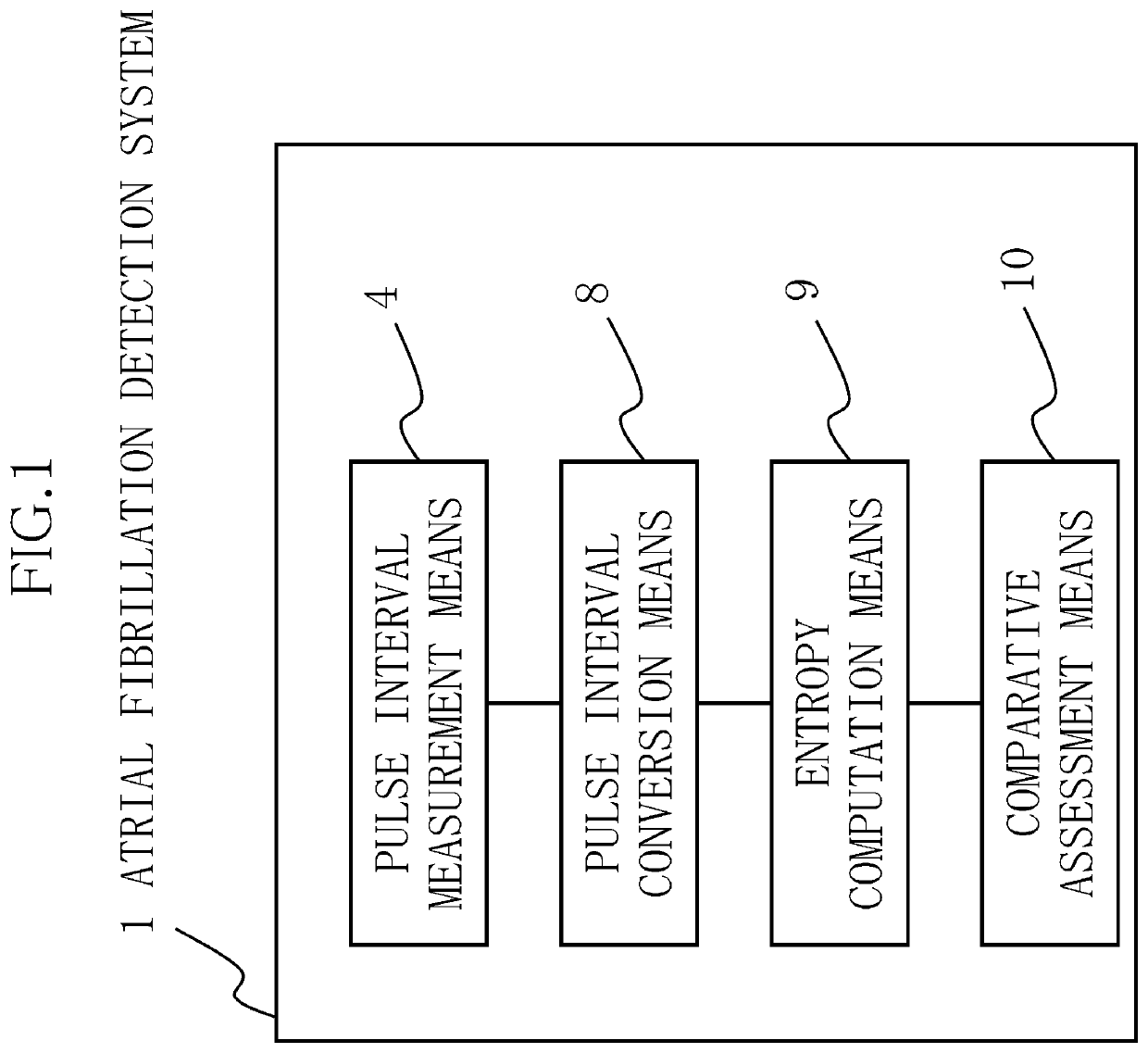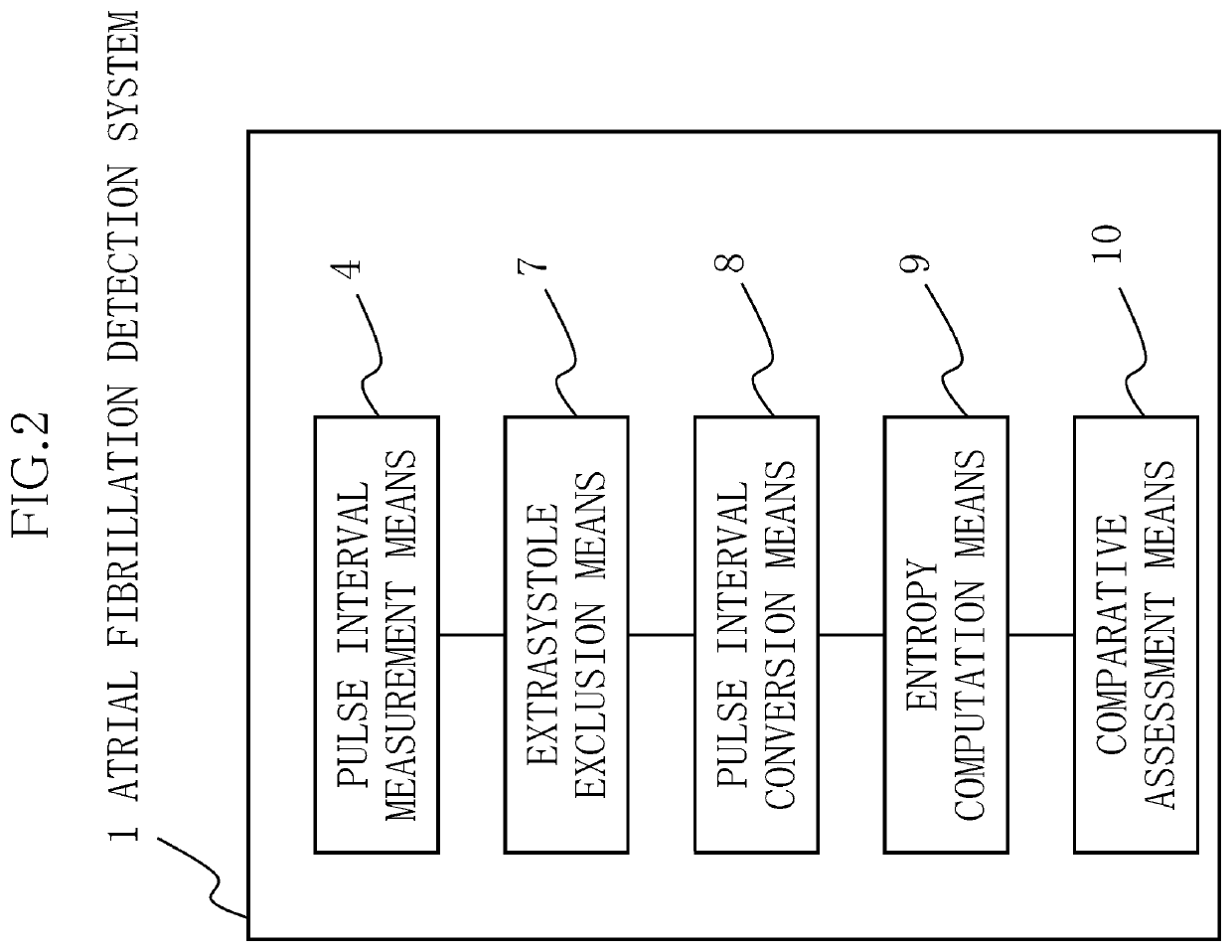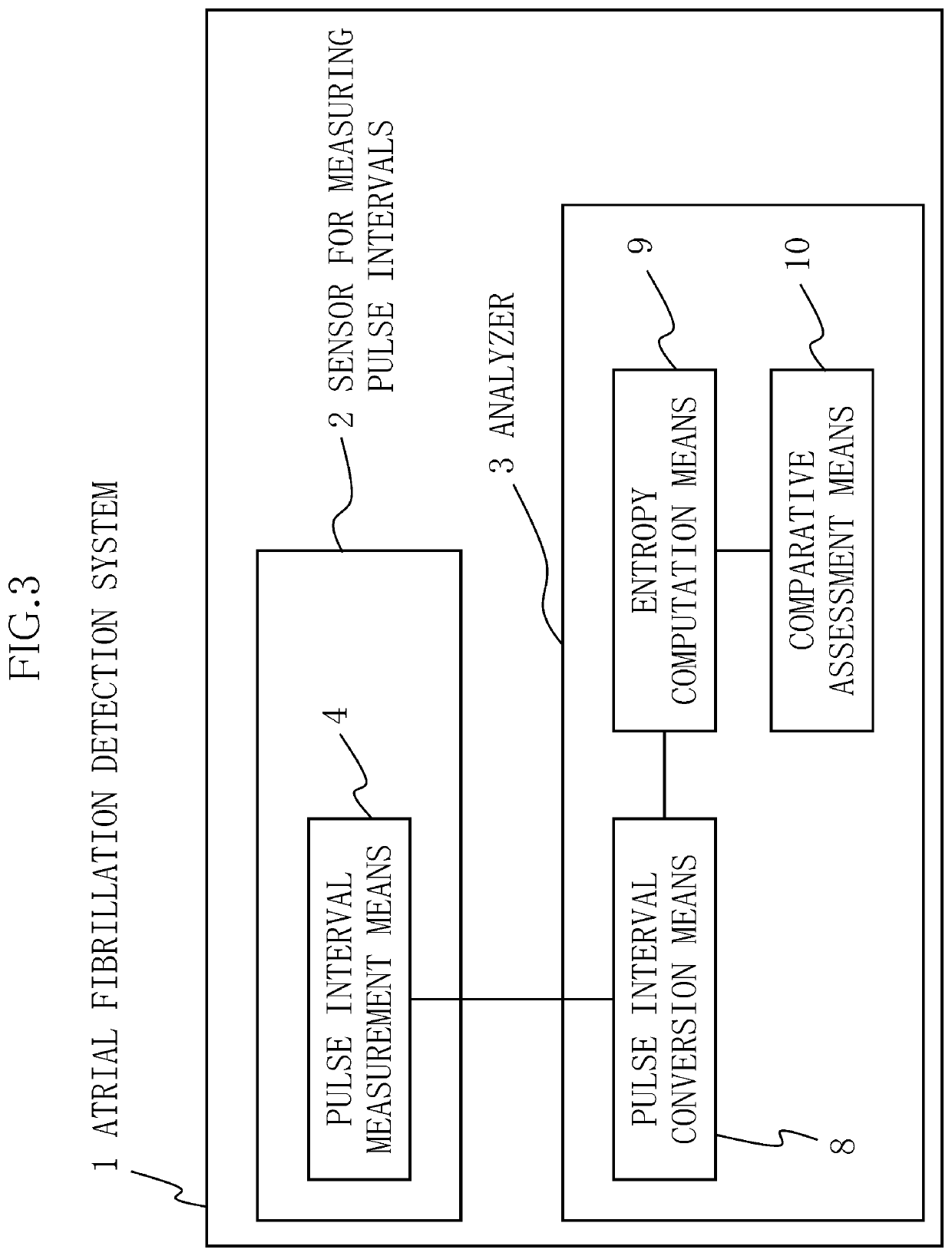Atrial fibrillation detection system
- Summary
- Abstract
- Description
- Claims
- Application Information
AI Technical Summary
Benefits of technology
Problems solved by technology
Method used
Image
Examples
example 1
[0091]A specific example 1 of the present invention is described below with reference to the diagrams.
[0092]The present example is an atrial fibrillation detection system that detects whether atrial fibrillation is occurring in a subject, the atrial fibrillation detection system 1 comprising, as shown in FIG. 1: pulse interval measurement means 4 that measures the pulse intervals of a heart; pulse interval conversion means 8 that performs conversion, using a prescribed function, so that the extent of variation in the pulse intervals R obtained by the pulse interval measurement means 4 is substantially fixed; entropy computation means 9 that calculates entropy S from pulse interval images r obtained through conversion by the pulse interval conversion means 8; and comparative assessment means 10 that compares the entropy S calculated by the entropy computation means 9 and a prescribed threshold value, and that, in cases where the entropy S is greater than the threshold value, assesses...
example 2
[0126]A specific example 2 of the present invention is described below with reference to the diagrams.
[0127]The present example shows a case where the atrial fibrillation detection system in example 1 is configured so as to furthermore comprise extrasystole exclusion means 7 that excludes pulse intervals R derived from extrasystoles other than atrial fibrillation, and to have a lower incidence of erroneous detection (false positives).
[0128]Specifically, in the atrial fibrillation detection system of Patent Document 1 (Japanese Patent No. 6150825), which is indicated as prior art, a normalized pulse interval NDR obtained through dividing the difference between adjacent pulse intervals R by the average value thereof is introduced, results in which the absolute value of the normalized pulse interval is greater than 0.1 are designated as abnormal normalized pulse intervals, and, when there are seven or more abnormal normalized pulse intervals among 20 successive normalized pulse interva...
example 3
[0149]A specific example 3 of the present invention is described below with reference to the diagrams.
[0150]The present example has a different configuration from example 1. Whereas the atrial fibrillation detection system 1 in example 1 has a system configuration (device configuration) in which the pulse interval measurement means 4, the pulse interval conversion means 8, the entropy computation means 9, and the comparative assessment means 10 are integrated as shown in FIG. 1, the present example shows a case in which the atrial fibrillation detection system 1 has a system configuration (device configuration) comprising, as shown in FIG. 3: a small and lightweight pulse interval measurement sensor 2 for measuring pulse intervals, the pulse interval measurement means 4 being provided to the pulse interval measurement sensor 2; and an analyzer 3 in which the pulse interval conversion means 8, the entropy computation means 9, and the comparative assessment means 10 are provided.
[0151...
PUM
 Login to View More
Login to View More Abstract
Description
Claims
Application Information
 Login to View More
Login to View More - R&D
- Intellectual Property
- Life Sciences
- Materials
- Tech Scout
- Unparalleled Data Quality
- Higher Quality Content
- 60% Fewer Hallucinations
Browse by: Latest US Patents, China's latest patents, Technical Efficacy Thesaurus, Application Domain, Technology Topic, Popular Technical Reports.
© 2025 PatSnap. All rights reserved.Legal|Privacy policy|Modern Slavery Act Transparency Statement|Sitemap|About US| Contact US: help@patsnap.com



